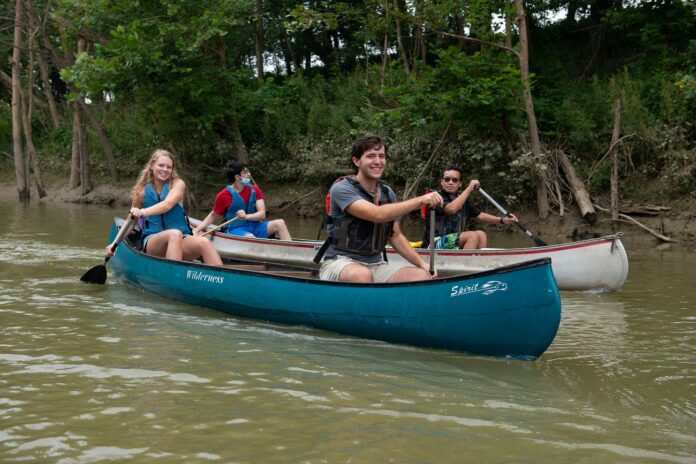
University of Louisville student researchers are helping river towns use recreation to drive tourism and economic development.
As part of an honors class, a group of undergraduate students studied — through interviews, research and first-hand experience — how towns like New Albany, Clarksville and Jeffersonville, Indiana, benefit from and can better promote kayaking, concerts and other riverside activities.
They worked with the U.S. National Park Service – Rivers, Trails and Conservation Assistance program to conduct river town reviews. The program’s team effort approach to looking with “fresh eyes on enhancing tourism and outdoor recreation” helped these communities explore how they can further realize the benefits of the Ohio River and the development of the 270-mile Ohio River Recreation Trail from Portsmouth, Ohio, to West Point, Kentucky.
“I think the main takeaway is that there is so much potential for the Ohio River and the communities that surround it,” said Forest Clevenger, a political science major who worked on the project. “By focusing on recreation, it not only reinvigorates the economies of these communities, but it makes it so that conservation (of rivers) is an economic asset and something that is supported.”
The results of the students’ research, including observations, models, maps and photos from their trips to the Ohio River Greenway, currently are on display at the main branch of the Louisville Free Public Library. The exhibit, “River of Life: Cities and Towns Along the Mighty Ohio,” is expected to run through the summer.
“The students’ work in this exhibit uses photos and explorations to understand past initiatives that encouraged river recreation,” said David Wicks, who taught the class and also is director of River City Paddle Sports. “They put a lot of work into this and it really shows. Their work could help shed new light on the role of rivers – how they shape and grow our towns.”
The exhibit also spawned an offshoot project called “Ripple Effects: Exploring Water in Louisville.” That project began with a photo contest that asked kids in grades K-12 to capture their feelings about water on film. The goal is to learn more about youth attitudes toward water — what it means to them, its role in their everyday lives and how they engage with it.
Mary Brydon-Miller, professor in the UofL College of Education and Human Development, will prepare a summary of the main themes that come out of the entries to present as part of an upcoming National Oceanic and Atmospheric Administration forum on extreme rainfall and community resilience.
“The important thing is the engagement of youth across the Louisville metro area in thinking about the importance of water in our community,” she said. “And asking kids to tell that story in a creative way will tell us a lot about how they see water’s role in their lives.”
Winners of the photo contest will be announced at Louisville Waterfront Park on June 21 and featured in another exhibit at LFPL this fall as part of the Louisville Photo Biennial.
More information on the exhibit, including sponsor listing, is available on the library website, as well as more information on the photo contest.































